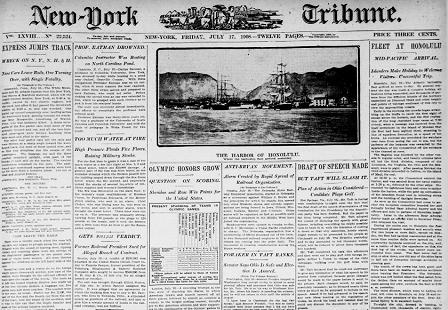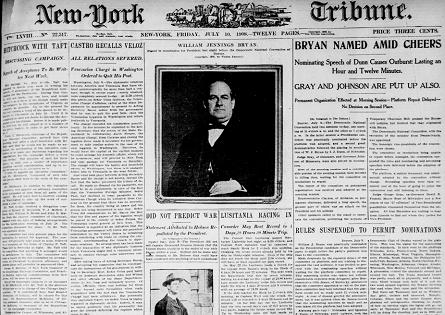It’s still just barely Thursday here.
- The Olympics have not been going well:
The unfortunate series of disputes which have arisen since the opening of the Olympic games, not only between the Americans and the officials of the Amateur Athletic Association but between the athletes of other nations and the same officials, culminated this afternoon in an occurrence which threatened to wreck the Olympic games.
The occurrence? The men’s 400 metre run was nearing the end:
It looked like anybody’s race as they approached the last turn, the three leaders being bunched. Their spurt for the final hundred yards was just begun, when suddenly a number of officials rushed on to the track, the tape across the finish was torn down and the race was declared void.
The officials claimed that J. C. Carpenter (USA) fouled Wyndham Halswelle (UK) on the turn. Not everyone agreed. Controversy ensued. All but one of the competitors ran through to the finish: Carpenter first, W. O. Robbins (USA) second, Halswelle third. The Americans wanted Carpenter declared the winner and filed a protest. They were not happy with what followed:
A committee meeting of the Amateur Athletic Association, the details of which have not been made public, was called, and the judges who rendered the decision and Halswelle were called to state their case. Neither any member of the American committee nor any one of the three American runners, however, was called on to make any statement, and the committee, after more than two hours’ consideration, rendered the following decision:
“The judges decide the race void, and order the same to be run over again on Saturday at noon. Carpenter is disqualified.”
The American team has ordered their runners not to run on Saturday (in 1908, 24 July was a Friday) and released a statement detailing their objections.
- British papers on the Olympic 400 metre controversy: Carpenter fouled Halswelle, no question about it. The Daily Telegraph wonders if there’s more to the story:
With three runners the Americans had a strong hand to play. They knew none of them was equal to Halswelle, so they were set to help one another on their journey. It is the writer’s view that all had a separate mission, although Taylor [who was far behind and who did not complete the race after the officials called it off] was no party to the plan laid down. He had no need to have it divulged to him.
- A huge thunderstorm hit New York and New Jersey.
- Three members of the National Guard were killed and twenty-six injured in an electrical storm that hit their camp in Gettysburg, PA yesterday.
- The military academy has suspended eight West Point cadets for hazing.
- President Roosevelt has ordered the Attorney General to retry the Standard Oil case. The paper seems to assume that readers know what it’s about; apparently an appeals court reversed an original decision that had gone against Standard Oil.
Photos: from the opening ceremonies of the Olympics.






